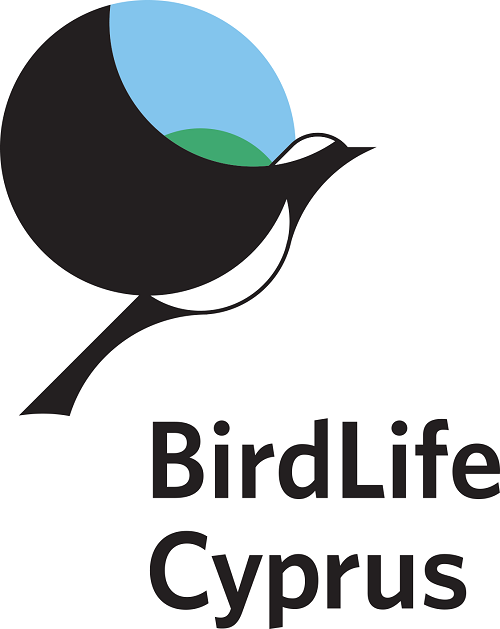The original purpose of bird ringing was to solve the mysteries of bird migration. Bird ringing for scientific purposes started in Denmark in 1889, when Hans Christian Cornelius Mortensen released starlings that were fitted with metal rings engraved with successive numbers. In a very short time ringing shed light on the complicated migration routes of many migrants and as early as 1931 the first atlas of bird migration was published. Nowadays, within Europe the broad patterns of migration are now known for most bird species.
Ringing birds is essential in order to know how long they live and when and where they move, questions that are crucial for bird conservation. The uniquely numbered metal ring which is placed around a bird’s leg provides a reliable and harmless method of identifying birds as individuals.
In addition, bird ringing is very important for the study of migratory birds and their conservation because it allows to track the movements and other life history traits of the birds over time. The identification of birds helps identify the crucial sites along their migratory routes and provides important information for conservation planning and site management. Moreover, through ringing we have the opportunity to obtain information regarding the dispersal, migration, longevity, behaviour, survival rate, reproductive success and population trends of migratory birds. Therefore, all this information helps us get a better insight of the birds’ biology and ecology and their demographic changes over time giving the opportunity for successful conservation measures to be adopted.

Bird ringing can be useful as a monitoring technique and to understand population dynamics and persistence. Furthermore, it is used in evolutionary and behavioral studies (e.g. inbreeding in the wild, the existence of infanticide, foraging strategies) and in studies for bird-transmitted diseases (e.g. avian influenza virus of the H5N1 type).
Birds can be caught using a variety of nets and traps. After removal from a net or a trap, birds are usually placed in soft cotton bags where they remain quiet and dry until they can be identified, ringed, examined and released. There are different types of bird ringing. Metal rings display the name of the ringing scheme or organisation and include a unique number. Colour rings often identify the location where the bird was ringed and/or the year of ringing. The bird can then be identified whenever re-sighted or re-caught. If a bird is recovered (found dead) or re-sighted, the record is reported to the responsible ringing scheme and a report can then be generated to trace its life history. The success of a ringing scheme is largely dependent on the reports of bird watchers and expert volunteers.
According to the data from EURING (the coordinating organisation for European bird ringing schemes) almost 4 million birds are ringed annually in Europe alone. In Cyprus, ringing began in 1961 and continues until today with more than 94 thousand birds ringed so far from 207 different species (updated 2020).
It is important to note that ringing should only be done by experienced ringers who have gained the required license after training, in order to ensure the safety of the birds. Furthermore, ringing requires delicate handling and experience on how the bird will be held, how the ring will be placed on the bird’s leg without injuries and how the different morphometric measurements (e.g. wing and tail length, fat score, mass) will be taken.

The information derived from ringing usually belongs to three categories: geographical, demographic and biological status. Geographical data provide evidence for which habitats within a breeding territory a bird preferentially selects for foraging and for the migration routes and the important stopover sites (with Cyprus being one of them). Demographic data such as data on the population processes of productivity, survival and immigration/ emigration can interpret population changes by linking differences in demographic rates with environmental changes. Finally, biological status data can provide information on environmental conditions experienced by the individual bird, or its ancestors. For instance, the diet composition of a bird over the few hours prior to trapping can be known as well as the evolutionary relationships and current taxonomy which are deriving from the genetic information from biological samples.
There are a lot of studies showing that ringing can play a key role in answering a variety of research questions. The importance of migration flyway networks of wintering and stopover sites for waterbirds has been highlighted by ringing studies. Such ringing data have been central to many international efforts to create networks of key protected areas along these flyways, and has helped establish the principle that such migratory populations can be sufficiently protected only by coordinated multinational conservation action.
A ringing study on Roseate Terns Sterna dougallii, initiated in response to the observed decline in the British and Irish breeding population, produced significant numbers of recoveries from coastal West Africa, particularly Ghana and Senegal due to trapping for food or sport. This direct evidence from the ringing study led to community-based conservation and education projects being established in Ghana and Senegal in the 1980s and 1990s, with considerable success in reducing the numbers of terns being trapped.
In terms of bird ringing and research in Cyprus, there is an ongoing study as part of my doctoral research about the patterns of endemism of breeding birds. In the context of this project, blood and feather samples will be collected for DNA analyses from different populations of as many breeding species in Cyprus, including the endemic species and subspecies. Along with the collection of samples, some biometric characteristics will be measured for comparison among populations and with mainland birds. Following collection of the samples, a series of molecular procedures for genetic analysis will be contacted in order to measure population structure and the extent of gene flow between populations. This will tell us the degree of connectivity between populations, and indicate those possibly of greater conservation concern. Furthermore, a genetic comparison with the mainland populations will be done to estimate the genetic distance, in order to examine the degree of relatedness between the birds found in Cyprus and those found on the mainland.
Michaella Moysi, Ringing Officer




